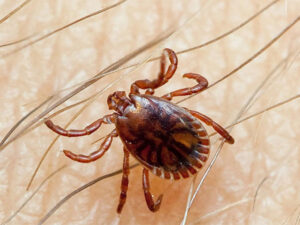
Washington [US], August 18 (ANI): According to a new scientific statement from the American Heart Association, obstructive sleep apnea, a form of sleep-disordered breathing, is common in children and adolescents and may be associated with elevated blood pressure and changes in heart structure.
The findings of the research were published in the ‘Journal of the American Heart Association’.
“The likelihood of children having disordered breathing during sleep and, in particular, obstructive sleep apnea, maybe due to enlargement of the tonsils, adenoids or a child’s facial structure, however, it is important for parents to recognize that obesity also puts kids at risk for obstructive sleep apnea,” said statement writing group chair Carissa M. Baker-Smith, MD, MPH, MS, director of pediatric preventive cardiology at the Nemours Children’s Hospital in Wilmington, Delaware, and associate professor of pediatric cardiology at Sidney Kimmel Medical College at Thomas Jefferson University in Philadelphia.
“Sleep disruptions due to sleep apnea have the potential to raise blood pressure and are linked with insulin resistance and abnormal lipids, all of which may adversely impact overall cardiovascular health later in life,” added Baker-Smith.
Sleep-disordered breathing is when someone experiences abnormal episodes of laboured breathing, snoring and snoring sounds during sleep.
It includes a spectrum of conditions from snoring to obstructive sleep apnea (OSA). OSA is associated with cardiovascular disease in adults, however, less is known about how the condition affects the immediate and long-term heart health of children and adolescents.
The research reviewed for the statement reveals the following:
1. Obstructive sleep apnea disrupts normal, restorative sleep, which can impact emotional health, as well as the immune, metabolic and cardiovascular systems in children and adolescents.
2. An estimated 1-6 per cent of all children and adolescents have obstructive sleep apnea.
3. About 30-60 per cent of adolescents who meet the criteria for obesity (BMI>=95th percentile) also have obstructive sleep apnea.
Risk factors for obstructive sleep apnea in children may vary with age; in general, the primary factors are obesity, upper and lower airway disease, allergic rhinitis, low muscle tone, enlarged tonsils and adenoids, craniofacial malformations and neuromuscular disorders.
Sickle cell disease has also been reported as an independent risk factor for OSA. Children who were born premature (before 37 weeks gestation) may have an increased risk for sleep-disordered breathing, partly due to delayed development of respiratory control and the smaller size of the upper airway.
However, this risk appears to decrease as children who are born premature age and grow.
OSA may be present in children with the following symptoms:
1. Habitual snoring, more than 3 nights per week;
2. Gasps or snorting noises while sleeping;
3. Laboured breathing during sleep;
4. Sleeping in a seated position or with the neck hyperextended;
5. Daytime sleepiness;
6. Headache upon waking up; or
7. Signs of upper airway obstruction.
The statement reiterated the recommendation of the American Academy of Otolaryngology and Head and Neck Surgery that a sleep study, called polysomnography, is the best test for diagnosing sleep-disordered breathing.
They recommend a sleep study before a tonsillectomy in children with sleep-disordered breathing who have conditions that increase their risk for complications during surgery, such as obesity, Down syndrome, craniofacial abnormalities (e.g., cleft palate), neuromuscular disorders (e.g., muscular dystrophy) or sickle cell disease.
Children with these conditions and OSA are considered at high risk for breathing complications during any surgery. Anaesthesia medicine should be carefully considered, and breathing should be closely monitored after surgery.
Children and adolescents with OSA may also have higher blood pressure. The statement detailed elevated sleeping blood pressure, which is normally more than 10 per cent lower than a person’s blood pressure level when awake.
Research showed that children and youth with OSA have a smaller dip in blood pressure while asleep, which may indicate abnormal blood pressure regulation.
In studies of adults, “non-dipping” is associated with a higher risk of cardiovascular events.
The statement suggested that children and adolescents with OSA have their blood pressure measured over a full 24-hour period to capture waking and sleeping measurements given the likelihood for higher nighttime blood pressure.
Metabolic syndrome is another concern for children with even mild OSA (as few as 2 episodes of pauses in breathing per hour).
This syndrome includes a cluster of factors such as high insulin and triglyceride levels, elevated blood pressure and low levels of high-density lipoprotein (HDL, the “good” cholesterol).
Continuous positive airway pressure (CPAP), a treatment for OSA, can significantly lower triglyceride levels and improve HDL levels.
Treating OSA may also improve the factors of metabolic syndrome, at least in the short term. However, obesity status may be the main reason for some metabolic factors, such as poor insulin control.
“Obesity is a significant risk factor for sleep disturbances and obstructive sleep apnea, and the severity of sleep apnea may be improved by weight loss interventions, which then improves metabolic syndrome factors such as insulin sensitivity,” Baker-Smith said.
“We need to increase awareness about how the rising prevalence of obesity may be impacting sleep quality in kids and recognize sleep-disordered breathing as something that could contribute to risks for hypertension and later cardiovascular disease,” Baker-Smith added.
The statement also outlined research that suggested a risk for pulmonary hypertension in children and adolescents that have long-term severe OSA.
The writing committee also identified the need for additional studies of cardiovascular disease risk associated with OSA in childhood that incorporate 24-hour blood pressure monitoring and measures of metabolic syndrome factors.
This scientific statement was prepared by the volunteer writing group on behalf of the American Heart Association’s Atherosclerosis, Hypertension and Obesity in the Young subcommittee of the Council on Cardiovascular Disease in the Young.
Co-authors included Justin Zachariah, MD, vice-chair; Amal Isaiah, MD; Maria Cecilia Melendres, MD; Joseph Mahgerefteh, MD; Anayansi Lasso-Pirot, MD; Shawyntee Mayo, MD, MPH; and Holly Gooding, MD, MSc. (ANI)



















